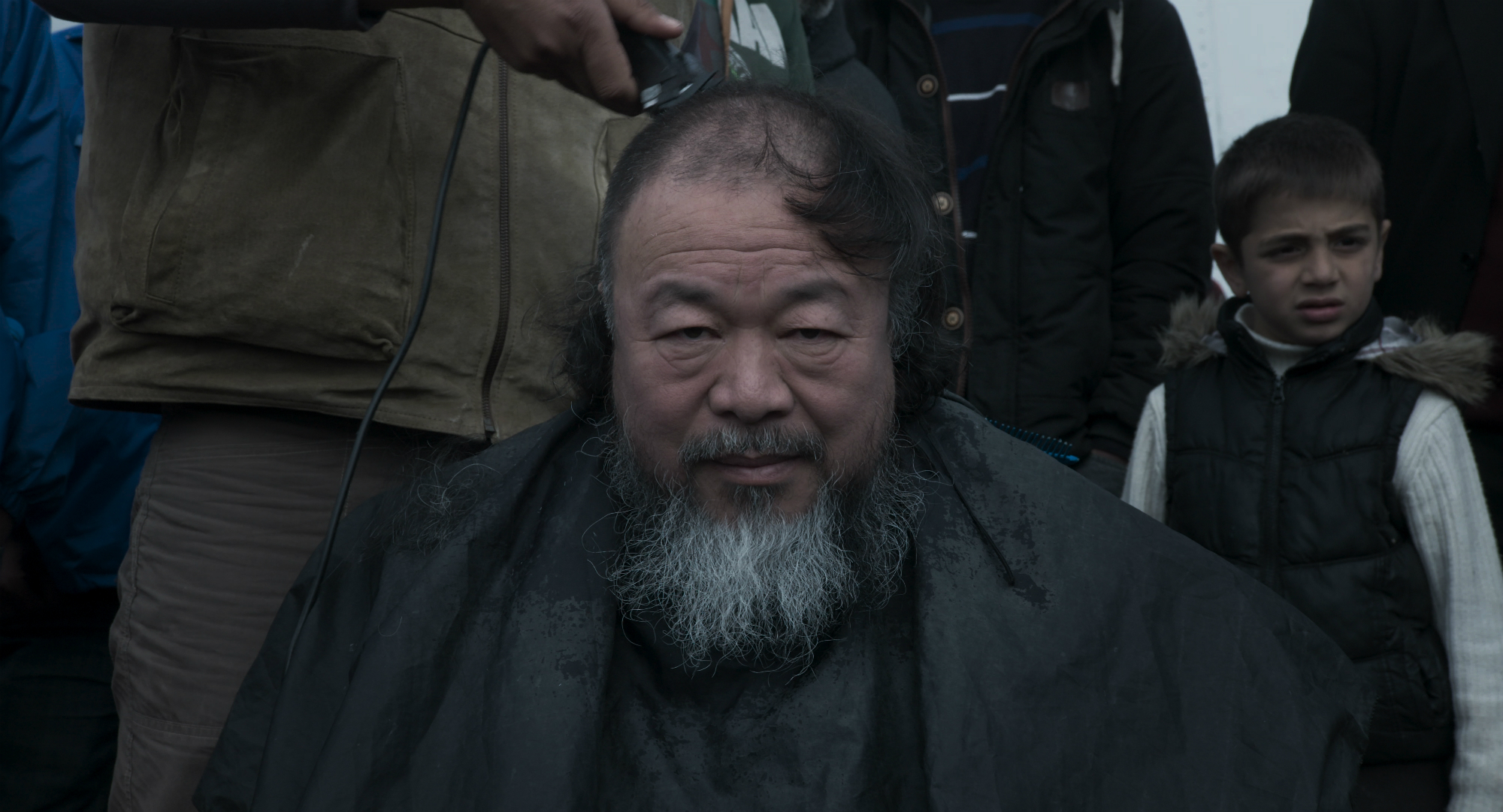
Ai Weiwei was in London on Monday, December 4, for the UK premiere of Human Flow, his documentary about the global refugee crisis. The film features Hollywood production values, and the artist is credited as the director and co-producer as well as being listed among the dozen cinematographers of this, his first feature-length film. He also appears in front of the camera—frequently.
The artist took part in a question-and-answer session broadcast live after the screening, which was relayed along with his film to nearly 200 cinemas across Britain and Ireland. The broadcaster Jon Snow put questions to Ai and fellow panelists posed by the audience via Twitter. Ai was asked which of the 23 countries he visited to make the film provided more hope than others. Ai said none did. Asked whether he thought the number of refugees worldwide, estimated to be around 65 million, would fall, the Chinese artist said he expected the number to increase. Besides war and persecution, there was climate change forcing people to migrate. He added: “Africa’s population is booming.”
Refugees near the Greek-Macedonian border. Still from Human Flow.
Ai and his team visited more than 40 refugee camps. He said that it was important to see the situation personally to show the global scale of the problem. His childhood experience in internal exile with his father meant he identified with the refugee experience, he added.
There is no doubting his commitment to consciousness raising and harnessing the power of his celebrity to do good. The film leaves no one in doubt, either, that Ai is #withrefugees. He is shown welcoming some to the Greek island of Lesbos after a perilous sea crossing from Turkey, following in their footsteps to Northern Europe over fields and fording a river at one point. He inspects the razor-wire fence erected by Hungary and its paramilitary security forces. He gets his head shaved in solidarity on the Greek-Macedonian border and even gatecrashes a wedding in Gaza. He “swaps” passports with a Syrian refugee (who offers his tent too, as a joke) and is shown haggling over fruit with a vendor. (Ai seems miffed when the seller checks the color of the artist’s money.) And he also turns celebrity chef, cooking kebabs. The film critic of Variety called this “distracting.” More damning was his verdict that as an educational film, Human Flow is “basically ‘Refugees for Dummies.’”
Harsh but fair. To Ai’s credit, he does not discriminate against economic migrants, heading to the US-Mexico border, where he has a conversation with a surprisingly polite border guard, who says Ai can carry on filming for 30 to 40 minutes even though his crew was on the “wrong” side of the border post. The uniformed Hungarian heavies, backed up by guard dogs and helicopters, do not look half as civil, and one of the most harrowing scene is when the Macedonian police fire rounds of tear gas at refugees.
As a filmmaker, Ai prefers long tracking shots of refugees and is fond of high-angle views of camps, typically captured by drone cameras. He finds beauty in their bleakness, often shooting in slow motion. The camps he documented on the ground and from the air range from the desperately makeshift to the orderly “booths” inside Tempelhof Berlin and ghettos where three generations of Palestinian refugees have lived in Jordan. The electricity is shown going off in another “permanent” camp, basically the entire Gaza strip, plunging its inhabitants into darkness. Confronting viewers with the scale of the problem and proving a glimpse of how people make do in terrible circumstances is perhaps the film’s greatest contribution. There are touches of dry humor, such as the feisty Palestinian female teenagers. One of them tells Ai she wants to see the world on a cruise ship.
Babes in arms, numerous toddlers, and even a pet kitten tug on the heartstrings in a way that would make Steven Spielberg proud. Pure Ai are the scenes of captive or stray animals. A pregnant cat scavenging, a cow as scapegoat, the dog in the burning oil fields near Mosul or a camel kept in a cave. These have walk-on parts. But the rescue of the traumatized tiger that was smuggled into Gaza is truly memorable. It took an international effort, including the Israeli government, for Laziz to be evacuated and sent to a sanctuary in South Africa by the charity Four Paws. Ai, the animal lover, makes the point that humans remain “imprisoned” on the Gaza Strip.
Dabaab in Kenya, the world’s largest refugee camp. Still from Human Flow
The audience in the Barbican Centre, where the film was screened, learned afterwards of an additional shaming fact. Only around 250 unaccompanied children had been granted asylum by the UK government, which is fewer than the number of seats in the stalls of the Milton Court concert hall in the City of London’s arts center.
Alf Dubs is a former child refugee whose life was saved from the Nazis by the Kindertransport, a DIY rescue mission masterminded by a British businessman. Now Lord Dubs, he sat alongside Ai on the panel. A member of the House of Lords, he campaigned for the “Dubs Amendment,” which compelled the UK Home Office to temporarily allow a few hundred unaccompanied child refugees into Britain. He called Britain’s official response so far “shameful.”